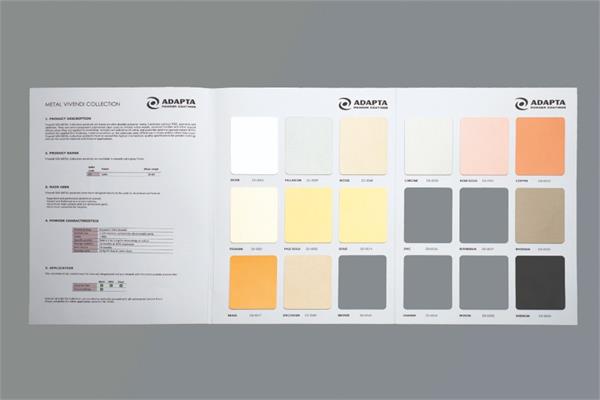
Adapta Color has renewed the Environmental Product Declaration for the years 2024-2029 for its VIVENDI SDS (Super Durable System) Collection.
Adapta Color is staying true to its commitment to provide proper environmental information about its products, as outlined in its management policy. There is a clear and transparent policy to disclose the environmental profile of its operations, and thus the declaration has been drafted regarding the line of products ADAPTA VIVENDI SDS.
Environmental Product Declarations (EPDs) transparently include information – verified by an independent third party – regarding the environmental performance of the product based on its Life Cycle Analysis (LCA). The information is divided in several impact categories (global warming, ozone depletion, acidification, etc.), along with additional details such as emitted emissions, generated waste, and more.
The EPD allows for the comparison of environmental information among products or services that perform the same function. The Adapta Color’s environmental product declaration has been verified according to ISO 14025 and EN 15804:2012+A2:2020, in accordance with the Product Category Rules (PCR) RCP 100 (version 3 – 27/05/2021 General construction products). It is crucial to verify the reference PCR (Product Category Rules) followed when comparing EPDs of similar products. The PCRs define the rules that must be followed by the LCA studies, and the information to be displayed in the EPD. This allows understanding the working parameters followed to obtain various indicators.
The Carbon Footprint, which is a highly relevant indicator of the contribution to climate change, is one of the indicators obtained in the development of the EPD. It measures the amount of greenhouse gases associated with that product or activity. In reality, the carbon footprint is a simplified version of the Life Cycle Analysis (LCA), focusing on a single environmental impact category, specifically related to global warming.
The VIVENDI SDS Collection has also been tested according to the ISO 16000-9:2006 standard for determining the emissions of volatile organic compounds from building and furnishing products. Based on the results, the company has achieved Class A+ (very low emissions) for wall, ceiling, window, and door panels.